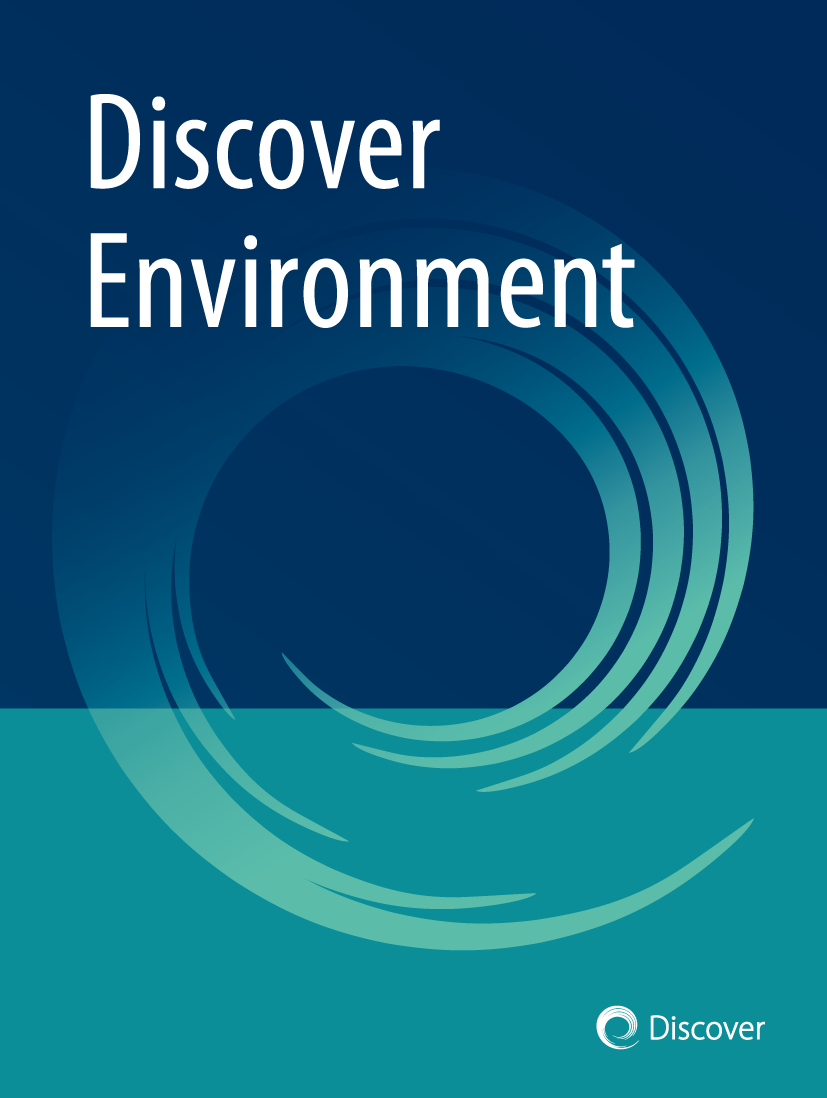Sociological impacts of energy management at Tema Oil Refinery. Discover Environment
Published in Earth & Environment and Sustainability
Sociological Impacts of Energy Management at Tema Oil Refine
This study explores how social factors like age, gender, education, and work experience influence how employees at Tema Oil Refinery (TOR) in Ghana perceive and respond to energy management practices. While most energy research focuses on technology or cost, this study highlights the human and sociological side of energy efficiency—showing that people’s backgrounds shape how they engage with environmental efforts.
Why Energy Management Matters
Energy Management Systems (EMS) help companies like TOR monitor and reduce energy use to lower costs and reduce pollution. These systems are especially important in large industries that consume high amounts of energy and release pollutants. With global attention on climate change and sustainability, EMS plays a crucial role in meeting international goals like those in the Paris Agreement. However, for such systems to work well, employees need to understand, support, and participate in them.
How the Study Was Done
The research used a mixed-methods approach, combining both quantitative (numbers) and qualitative (opinions) data. Fifty staff members from five key departments at TOR were surveyed using a structured questionnaire. Questions focused on their views about pollution control, energy-saving strategies, and their own participation in these processes. Demographic details such as gender, age, education, and job experience were also collected.
Key Findings
-
Gender Differences
Men and women view TOR’s energy strategies differently. Women tended to rate the refinery’s pollution control efforts more critically. This may indicate that environmental communication and engagement strategies at TOR do not equally reach all groups. Including more diverse perspectives in planning and evaluation can lead to more effective policies.
-
Age and Experience
Younger workers generally had a more positive view of TOR’s energy initiatives than older ones. Similarly, those with less work experience were more optimistic. Long-term employees were more skeptical, possibly due to past experiences with unfulfilled initiatives. This highlights the importance of regular engagement with experienced staff, whose insights can be valuable for long-term improvement.
-
Education Levels
Education made a significant difference. Employees with higher education—especially those with master’s degrees—were more critical of TOR’s strategies. Their expectations for strong environmental policies were higher, showing that technical knowledge increases scrutiny. TOR needs to adjust its communication and training efforts based on employees’ educational backgrounds to ensure broader support.
Views on Environmental Strategies
Employees were asked to assess various pollution control strategies. The results were mixed:
- Measures to address soil and water pollution were seen as somewhat effective.
- Air pollution strategies received lower ratings, signaling a need for better controls.
- Many respondents were undecided, suggesting a communication gap about what actions TOR is taking.
Insights Across Groups
- Men rated TOR’s efforts more positively than women, who remained more skeptical.
- Younger workers expressed lower confidence in pollution control strategies than older workers.
- Higher-educated employees were more likely to question TOR’s practices, showing a need for stronger accountability.
These differences show that energy strategies are not “one-size-fits-all.” People’s backgrounds affect how they view company efforts and whether they participate fully in energy-saving practices.
Recommendations
The study offers several ways TOR—and other similar companies—can improve employee engagement and the success of energy strategies:
- Gender-Inclusive Communication: Policies should be communicated in ways that consider gender-specific concerns and experiences.
- Age-Specific Training: Younger and older employees may require different approaches to understand and support energy initiatives.
- Experience-Based Engagement: Involving long-term employees in decision-making helps tap into institutional knowledge and rebuild trust.
- Education-Sensitive Materials: Tailoring materials to different education levels can improve understanding and buy-in.
- Clear Feedback Channels: Regular updates on progress and open channels for employee input help build ownership and accountability.
Conclusion
This study shows that effective energy management depends not just on technology, but on people. Gender, age, education, and job experience all influence how employees at TOR understand and engage with energy policies. If management recognizes these differences and adapts strategies accordingly, energy initiatives are more likely to succeed.
TOR and industries like it must treat their workers not just as users of energy systems, but as active participants. By combining strong technical measures with inclusive, people-centered approaches, companies can achieve better energy efficiency, lower environmental impact, and greater workplace engagement.
Follow the Topic
-
Discover Environment

This is a transdisciplinary, open-access journal that provides a leading platform for the rapid dissemination of knowledge and advances covering the research and innovation that is taking place across the environmental sector.
What are SDG Topics?
An introduction to Sustainable Development Goals (SDGs) Topics and their role in highlighting sustainable development research.
Continue reading announcementRelated Collections
With Collections, you can get published faster and increase your visibility.
Environmental Pollutants: Origins, Pathways, Impacts, and Sustainable Solutions
Pollution is a critical threat to ecosystems, human health, and the planet’s future. From industrial waste in China to microplastics in the Mediterranean and PFAS contamination in the U.S., pollutants spread across air, water, and soil, harming wildlife and communities worldwide. Understanding how these contaminants move, transform, and impact the environment is key to designing effective solutions.
This collection brings together cutting-edge research on pollution sources, environmental behavior, risks, and innovative cleanup strategies—covering everything from heavy metals in mining regions to pharmaceutical waste in urban waterways. We highlight advances in environmental science, green technology, and policy to tackle both long-standing and emerging threats like e-waste and AI-driven monitoring. The topics include, but are not limited to, the following:
• Pollution Origins: Industrial, agricultural, and urban sources, including legacy and emerging contaminants.
• Environmental Pathways: How pollutants travel through air, water, soil, and food chains.
• Risks and Impacts: Effects on biodiversity and human health, from local hotspots to global crises.
• Cleanup and Prevention: Nature-based solutions (like wetland restoration) and high-tech innovations (such as catalytic oxidation).
• Policy and Tools: Smart regulations, predictive modeling, and new detection methods.
This Collection supports and amplifies research related to: SDG 11
Keywords:PFAS, Heavy metals, Microplastics, Emerging Contaminants, Emission sources, Environmental forensics, Ecological indicators, Pollution sources, Contaminant transport, Ecological risk assessment, Pollutant fate and transformation, Bioaccumulation, Ecological restoration, Remediation technologies, Sustainable pollution management
Publishing Model: Open Access
Deadline: May 01, 2026
Socio-ecological Systems and Climate Resilience
Climate change poses a significant threat to both biophysical systems and societal communities. Climate resilience is embedded within socio-ecological systems (SES), where social actors and the ecological units they manage are interdependent as part of their livelihoods. Achieving climate resilience requires adjustments to social structures, political and economic systems, power dynamics, worldviews, cultures, values, and ideologies in order to create a sustainable, climate-resilient society. Additionally, there is a need to bridge emerging technology (e.g., AI) with social innovation to enhance the capacity for real-time, data-driven decision-making, foster community-resilient responses to climate impacts, and ultimately reshape climate adaptation policies and practices.
The Collection invites the submission of interdisciplinary and policy-oriented research with innovative systems approaches and emerging methodologies for decision-making and co-designing climate solutions. We encourage contributions from a wide range of fields, including environmental science, sociology, human geography, environmental economics, environmental public health and public policy, etc. We seek research that focuses on the interconnectedness between human societies and natural ecological systems, the impacts of climate change on human well-being, community adaptive capacity, innovative governance solutions, knowledge co-production (with an emphasis on local and indigenous knowledge for climate adaptation), climate equity, local and global collaboration efforts, and the role of technology and education in enhancing climate resilience.
Manuscripts presenting empirical studies, theoretical frameworks, policy analysis, and case studies that contribute both to theoretical advancements and practical applications are encouraged.
Keywords:Socio-Ecological Resilience, Climate Governance, Technological And Social Innovation, Indigenous Knowledge Systems, Sustainability Transition, Human And Ecological Well-Being
Publishing Model: Open Access
Deadline: Jun 30, 2026





Please sign in or register for FREE
If you are a registered user on Research Communities by Springer Nature, please sign in